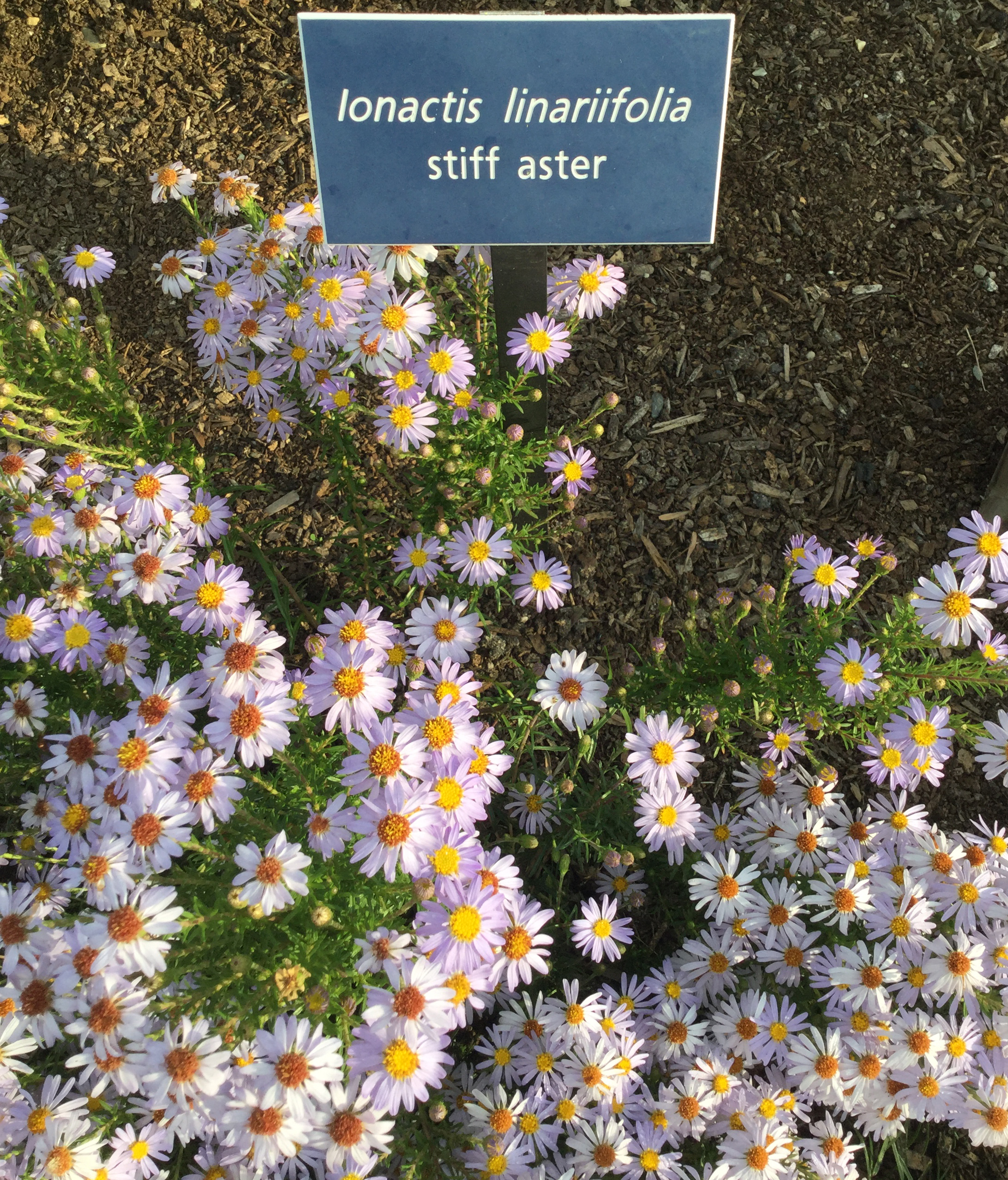The Wrack
The Wrack is the Wells Reserve blog, our collective logbook on the web.
The Wrack is the Wells Reserve blog, our collective logbook on the web.
Bristly aster, Ionactis linariifolius, can be seen blooming in meadows around the reserve and is a new addition to the native plant border. It is named for its flax-like leaves and although many asters are bristly, this one is especially so. Its leaves feel like an unshaven beard.

Bristly aster (also called stiff aster) blooms from early September through October, making it a good choice for pollinators that visit the garden in late summer and early fall. As a low-growing perennial, it reaches 6 to 18 inches in height and tolerates a variety of conditions that include sun to part sun, moist to dry, and average, sandy, or clay soils.
This aster spreads well and makes a good groundcover that could be planted along with other Maine native wildflowers, including lupine, Lupinus perennis, and Scotch bellflowers, Campanula rotundifolia. Seeds for bristly aster can be collected when dry and planted outdoors in pots in fall, then into the garden the following year when plants have sufficient growth. As with all asters, keep them bushy by pinching back leaves in June.
Asters are also called Michaelmas daisies because they bloom through Michaelmas, a festival held on September 29 that historically celebrated St. Michael the archangel. In 1014 England, Michelmas was associated with the autumnal equinox and harvest, a time of celebration and feasting. Michelmas traditions included three days of fasting before feasting on goose and ginger. I can only surmise that the ginger helped with the gastrointestinal upset incurred from eating goose.
Our little star flower has been revered for a thousand years and much folklore has been passed from generation to generation. Some may be true, some not, but the aster continues to be a stalwart in our gardens and reminds us of the celebration of harvest and fall.